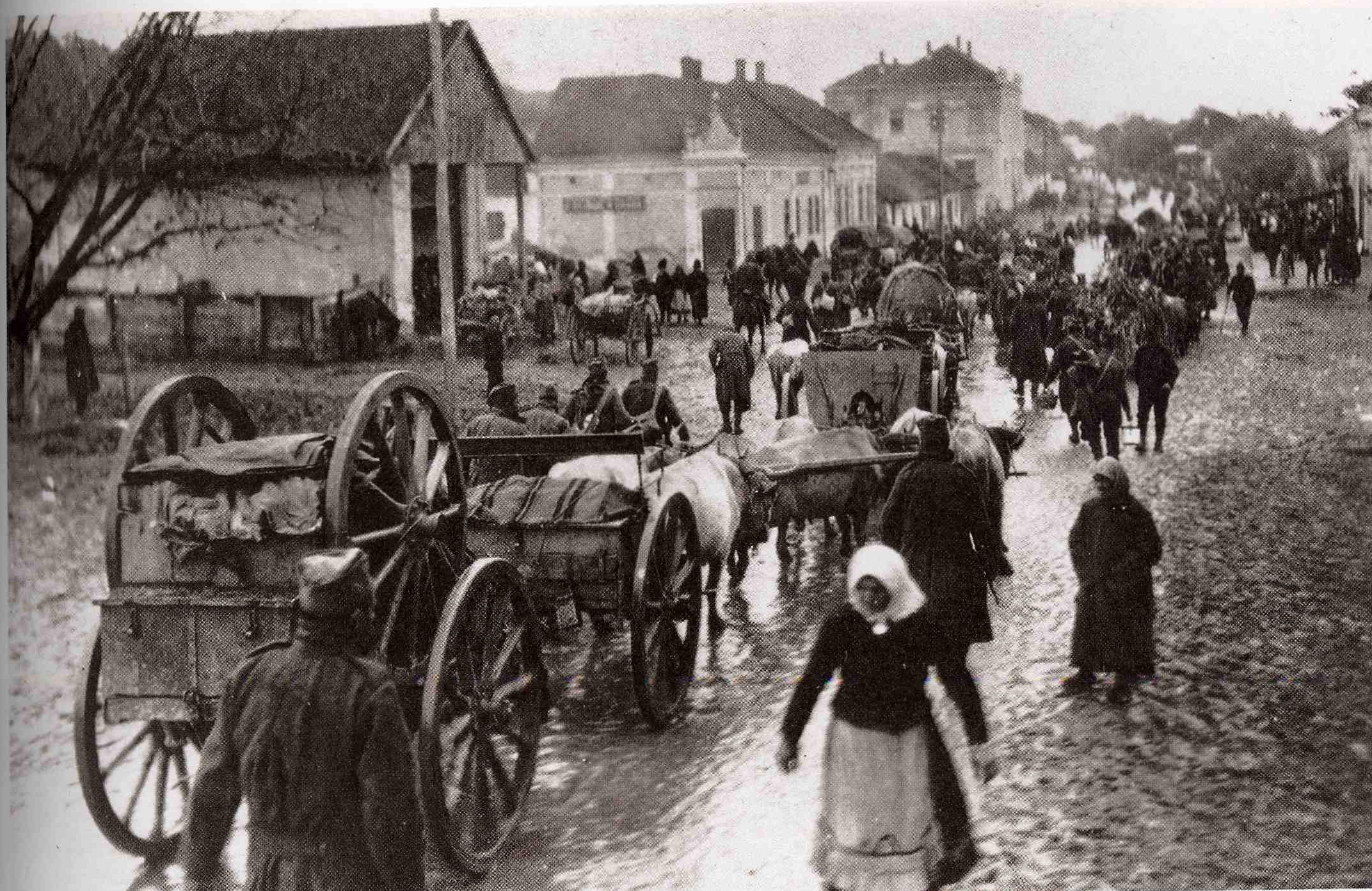Expanses are Vast; Fighting is Chaotic
Special to The Great War project
(14-15 October) While by mid-October 1914 the Western Front was hardening into a stalemate of trenches, barbed wire, and artillery shelling, the Eastern Front looked quite different.
“In the immense expanses of the east,” writes historian Max Hastings, “a war of movement continued. In a world of few roads and fewer railways, large forces moved only as fast as could a marching man. When rain and mud descended, that pace became slow indeed.” Hastings observes that “distances were so vast that neither side could maintain continuous lines.”
Although the Russian side experiences some disastrous defeats, especially at Tannenberg at the beginning of the war, the Russian army is so large and so relentless that its primary adversary, the Austro-Hungarian forces, is “now recognized by both sides as the sick man of the conflict,” writes Hastings. By mid-October a century ago, “The Russians were committed to simultaneous efforts to finish off the Austrians and to reverse the outcome of their disastrous August campaign in East Prussia.”
But the fighting on the Eastern Front is chaotic, with each side misinterpreting the actions of the other.
The obligation to support the Austrians falls on the Germans, a task they fail to consider at the beginning of the war. But the Germans have no choice. In Poland and Galicia, they are now facing “the prospect of a wholesale Austrian collapse.”
So the Germans go on the offensive into Poland in “appalling weather, along roads deep in mud.” Soon the Germans will decide the conditions are too overwhelming and they will withdraw.
“Once again,” writes Hastings, “both sides had overreached themselves. A few thousand more men had perished for no significant advantage to either.”
On the Western Front, historian Martin Gilbert reports that “almost all of Belgium was under occupation, and tens of thousands of Belgian refugees had arrived in England.” October 15th a century ago sees the Germans entering Ostend, the Belgian port on the English Channel.
But as Gilbert reports, “by the utmost exertions of British, French, and Belgian troops…
…the limit of the German advance had been reached.”
Fatefully, these forces coalesce at the ancient walled city of Ypres in Belgium on these days one-hundred years ago, reports war historian John Keegan.


